In the quest for beauty, nail polish has become a staple in many people’s weekly routines. The vibrant colors and glossy finishes offer a way to express individuality and style. However, beneath the allure of perfectly manicured nails lies a hidden threat that many are unaware of. Nail polish, often perceived as a harmless cosmetic, can be one of the most toxic products people, predominately women, encounter regularly.
This blog will uncover the dark side of nail polish, revealing the hazardous ingredients that can pose a serious risk to your health. From carcinogenic compounds to endocrine disruptors, the risks associated with nail polish are far more alarming than commonly known. Join us as we expose the toxic nightmare lurking in nail polish collections, and learn how to make safer choices for both your health and the environment.
History of Nail Polish
Nail polish has a rich history that dates back to ancient civilizations. The origins of nail polish can be traced to China around 3000 BC, where ingredients like beeswax, egg whites, and natural dyes were used to create a lacquer for the nails. Similarly, in ancient Egypt, nail color was a status symbol, with different shades indicating one’s social class.

Over time, nail polish evolved significantly. By the early 20th century, modern nail polish emerged, inspired by the high-gloss finishes used on automobiles. This marked the beginning of the nail polish industry’s boom. The 1920s saw the introduction of the first commercially successful nail polish by Revlon, which revolutionized the market with its long-lasting and vibrant colors.
As nail polish grew in popularity, so did its formulations, becoming more complex and chemically diverse. Today, nail polish is a multi-billion-dollar industry, with an array of colors, finishes, and effects. However, this evolution has come with a hidden cost — an increase in the use of harmful chemicals to achieve the desired properties of durability, shine, and quick drying.
Common Toxic Ingredients in Nail Polish
While nail polish offers an array of stunning colors and finishes, it often comes with a cocktail of harmful chemicals. Understanding these ingredients is crucial for making better choices about the products we use. Here are some of the most common toxic substances found in nail polish.
Formaldehyde
Formaldehyde is used as a hardening agent to help polish last longer. However, it is a known carcinogen and can cause serious health issues, including respiratory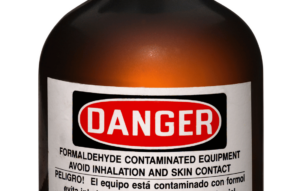 problems and skin irritation. Long-term exposure has been linked to cancer, making it a particularly concerning ingredient.
problems and skin irritation. Long-term exposure has been linked to cancer, making it a particularly concerning ingredient.
Toluene
Toluene gives nail polish a smooth application and helps it dry quickly. Despite its benefits, toluene can be highly toxic. It has been associated with neurological damage, headaches, dizziness, and reproductive harm. Pregnant women, in particular, should avoid exposure to toluene as it can affect fetal development.
Dibutyl Phthalate (DBP)
DBP is used to prevent nail polish from becoming brittle. Unfortunately, it is an endocrine disruptor and has been linked to reproductive issues and developmental problems. The European Union has banned DBP from cosmetics, yet it is still found in many products in other parts of the world.
Camphor
Camphor is often added to nail polish to give it a glossy finish and a pleasant fragrance. However, it can cause nausea, dizziness, and even liver damage in high doses. Prolonged exposure to camphor can lead to more severe health issues, particularly affecting the nervous system.
Triphenyl Phosphate (TPHP)
TPHP is used to make nail polish more flexible and durable. Recent studies have shown that it can disrupt hormone function, leading to developmental and reproductive issues. The fact that TPHP can be absorbed through the skin makes its presence in nail polish particularly worrisome.
By being aware of these common toxic ingredients, consumers can better navigate the nail polish market and opt for safer alternatives. The presence of these chemicals highlights the need for greater transparency and stricter regulation in the cosmetic industry to protect public health.
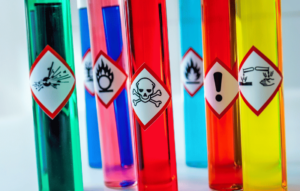
Routes of Exposure and Health Effects
Nail polish poses health risks through several routes of exposure, each affecting the body in different ways. Understanding these exposure pathways can help in taking precautions to minimize potential harm.
Inhalation
One of the primary routes of exposure is inhalation. During application, nail polish releases volatile organic compounds (VOCs) into the air. These VOCs, including formaldehyde and toluene, can be inhaled, leading to short-term effects such as headaches, dizziness, and respiratory irritation. Chronic exposure can result in more severe health issues, such as long-term respiratory problems and increased cancer risk.
Dermal Absorption
Nail polish comes into direct contact with the skin around the nails and can be absorbed through the nail bed. Ingredients like TPHP and camphor can penetrate the skin and enter the bloodstream. Repeated exposure through dermal absorption can lead to systemic effects, including hormonal imbalances and liver damage.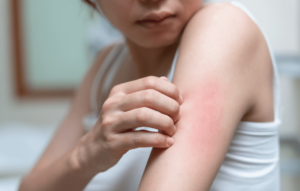
Ingestion
Although less common, accidental ingestion of nail polish can occur, especially in children. This can happen when children put their hands in their mouths after applying nail polish. Ingestion of even small amounts of these toxic ingredients can lead to nausea, vomiting, and more serious health effects depending on the chemical involved.
Environmental Impact of Nail Polish
Nail polish not only poses risks to human health but also has significant environmental consequences. The production, usage, and disposal of nail polish contribute to pollution and harm wildlife. Understanding these impacts can drive more eco-friendly choices and practices.
Production and Disposal
The manufacturing of nail polish involves the use of numerous chemicals and solvents, many of which are harmful to the environment. Factories producing nail polish can and often do release pollutants into the air and water, contributing to environmental degradation. The energy consumption and waste generated during production also add to the ecological footprint. 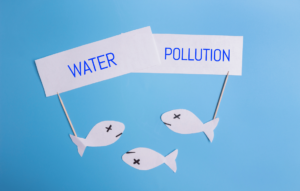
Disposal of nail polish is another significant concern. Many people are unaware that nail polish should be treated as hazardous waste due to its toxic ingredients. When discarded improperly, nail polish can leach harmful chemicals into the soil and water, affecting ecosystems and potentially entering the food chain. Non-biodegradable components of nail polish bottles and brushes also contribute to plastic pollution, persisting in the environment for hundreds of years.
Impact on Wildlife
Chemical runoff from nail polish factories and improper disposal can severely impact wildlife, particularly aquatic life. Toxic substances like toluene and formaldehyde can contaminate water bodies, affecting fish and other marine organisms. These chemicals can disrupt reproductive systems, cause developmental issues, and lead to mortality in wildlife.
Moreover, microplastics from nail polish bottles and brushes can be ingested by marine animals, leading to physical harm and chemical exposure. The accumulation of these pollutants in the environment poses a long-term threat to biodiversity and the health of ecosystems.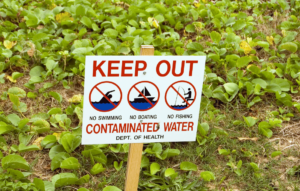
Regulatory Oversight and Gaps
Despite the known risks associated with nail polish ingredients, regulatory oversight remains insufficient in many regions. Understanding the current regulations and identifying gaps is crucial for advocating for safer cosmetic products.
Current Regulations
Various regulatory bodies, such as the U.S. Food and Drug Administration (FDA) and the European Chemicals Agency (ECHA), oversee the safety of cosmetic products. The FDA, for example, monitors the safety of nail polish ingredients but does not pre-approve products before they reach the market. Similarly, the ECHA enforces regulations under the REACH (Registration, Evaluation, Authorization, and Restriction of Chemicals) framework, which aims to protect human health and the environment from chemical risks.
Some regions have stricter regulations than others. For instance, the European Union has banned or restricted the use of several toxic ingredients, such as DBP and formaldehyde, in cosmetics. However, in many other parts of the world, these harmful substances are still commonly used in nail polishes.
Gaps in Regulation
Despite existing regulations, significant gaps remain in ensuring the safety of nail polish products. One major issue is the lack of comprehensive testing and long-term studies on the health effects of many nail polish ingredients. Additionally, regulatory frameworks often lag behind scientific findings, meaning harmful chemicals can remain in use for years before action is taken.
Another gap is the inconsistent enforcement of regulations. Even in regions with stricter laws, enforcement can be lax, allowing non-compliant products to enter the market. There is also a serious issue with the lack of transparency in ingredient labeling, making it difficult for consumers to make informed choices.
Need for Stricter Regulations and Better Enforcement
To protect public health, there is a pressing need for stricter regulations and more rigorous enforcement. This includes:
– Pre-market safety assessments for all nail polish ingredients
– Banning or restricting known harmful substances
– Regular updates to regulatory lists based on the latest scientific research
– Increased transparency in labeling, including clear identification of toxic ingredients
– Enhanced monitoring and enforcement to ensure compliance
By addressing these regulatory gaps, we can reduce the health risks associated with nail polish and ensure that safer products are available to consumers. Advocacy for stronger regulations and better enforcement is essential for creating a safer cosmetic industry.
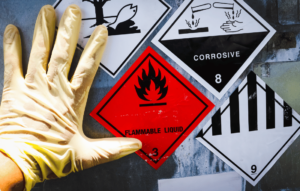
Safer Alternatives
Fortunately, there are safer alternatives to traditional nail polish that can help reduce exposure to harmful chemicals and minimize environmental impact. Here are some options to consider:
Non-Toxic Nail Polishes
Many brands now offer nail polishes formulated without the most harmful ingredients like formaldehyde, toluene, and DBP. Look for products labeled as “3-free,” “5-free,” or even “10-free,” indicating the exclusion of various toxic substances. Some reputable non-toxic nail polish brands include Zoya, Piggy Paint, and Ella + Mila. Always check the ingredient list to ensure the polish meets your safety standards.
Water-Based Nail Polishes
Water-based nail polishes are generally a safer alternative to solvent-based formulas. These polishes use water as the primary solvent, reducing the emission of VOCs and the associated health risks. They are also easier to remove, often requiring only water or a gentle peel-off method, which further reduces chemical exposure.
DIY and Natural Options
For those who prefer a more hands-on approach, making your own nail polish at home can be a fun and safe alternative. DIY recipes often use natural ingredients like beet juice, turmeric, and activated charcoal to create various colors. While these homemade polishes might not last as long as commercial ones, they offer a non-toxic option for occasional use.
By choosing safer alternatives, you can enjoy beautiful nails without compromising your health or the environment. Supporting brands that prioritize non-toxic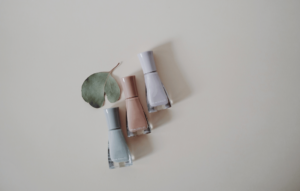 formulations and sustainable practices also encourages the cosmetic industry to adopt safer and more eco-friendly standards.
formulations and sustainable practices also encourages the cosmetic industry to adopt safer and more eco-friendly standards.
Closing Thoughts
Nail polish, a beloved beauty product for many, harbors hidden dangers that can have serious health and environmental impacts. The toxic ingredients commonly found in nail polishes pose risks through inhalation, dermal absorption, and even ingestion. Vulnerable populations such as pregnant women, salon workers, and children face heightened exposure and potential harm.
While regulatory bodies do exist, significant gaps in oversight and enforcement leave consumers at risk. The production and disposal of nail polish further contribute to environmental degradation, affecting wildlife and ecosystems.
However, there is hope. Safer alternatives, including non-toxic and water-based nail polishes, as well as DIY options, offer ways to enjoy nail beauty without the associated risks. By making informed choices and supporting eco-friendly brands, we can protect our health and the environment.
It’s time to rethink our beauty routines and prioritize safety and sustainability. Let’s advocate for stronger regulations, better enforcement, and increased transparency in the cosmetic industry. Your nails and your health deserve nothing less than the best.








